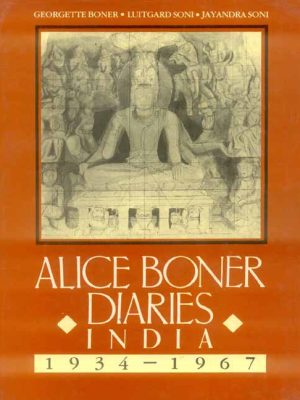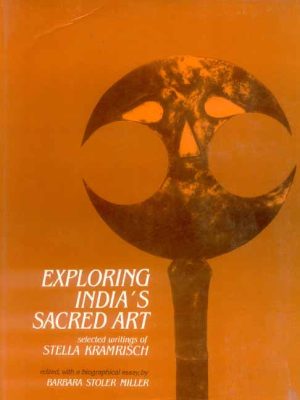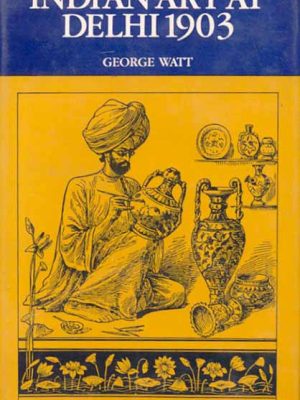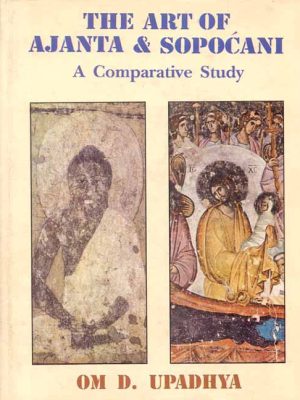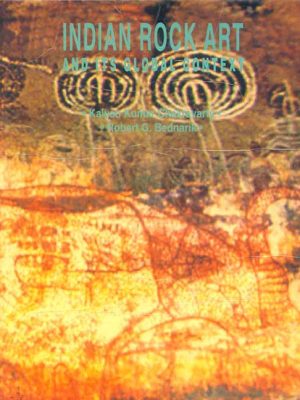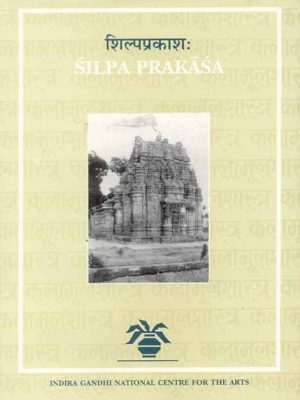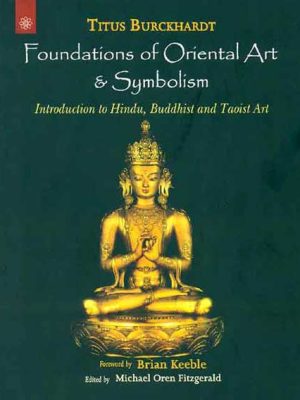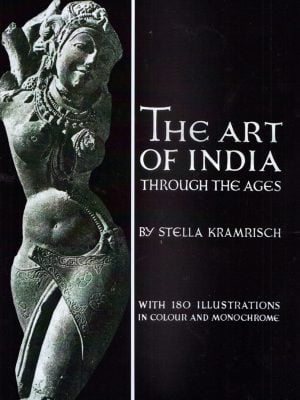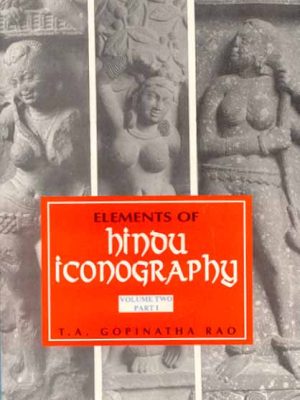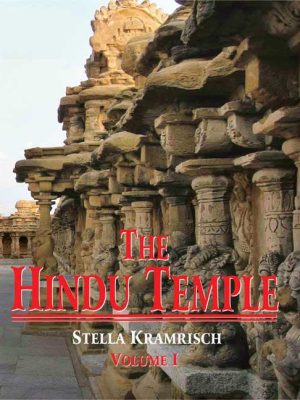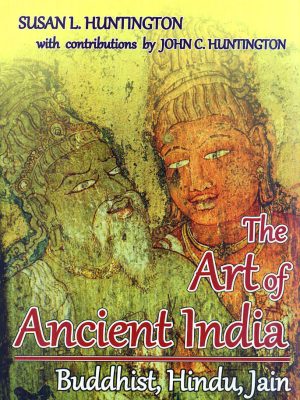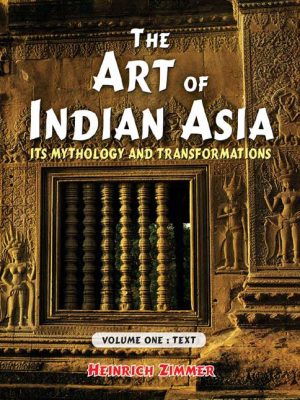Art Architecture Antiquities
-
Alice Boner Diaries: India 1934-1967
Alice Boner Diaries: India 1934-1967
Apart from an insight into Alice Boner’s keen observation of Indian temple-architecture and art the present selection of her diary entries also depict the struggles of Alice Boner, the artist. In her work she strove to represent the spirit of India which her intensive experiences of over 40 years in the country revealed to her. Her experiences also included contact with personalities of the calibre of Rabindranath Tagore, Swami Laxman Joo, Sarojini Naidu, Ustad Alauddin Khan, and her admiration of Mahatma Gandhi. As a remarkable diarist Alice Boner puts her thoughts to pen in an elegant, eminently readable style. The reader feels with her the thrill and awe at the ancient monumental sights all over India, reads about her vision of the principles of sacred art, and shares with her the inner conflict of one torn between the two worlds of Europe and India. Over and over again this unique woman, with roots in the European culture, expresses her deep attachment to India. Most of the diary entries are in German and English and these have been retained for the sake of the originality of her fine expression, interspeersed with a selection of sketches from her vast repertoire. In addition, the German portions have been translated here for the benefit of English readers.
₹995.00 -
Exploring India’s Sacred Art: Selected Writings of Stella Kramrisch Ed. & with a biographical Essay
Exploring India’s Sacred Art: Selected Writings of Stella Kramrisch Ed. & with a biographical Essay
Exploring India’s Sacred Art presents a selection of Stella Kramrisch’s influential essays, along with a biographical essay. The writings collected here emphasize the cultural and symbolic values of Indian art. The first section discusses the social and religious contexts of art. This is followed by essays on various forms of ritual art. The section entitled “The Subtle Body” is derived from her term for the form that underlies concrete shapes; it includes studies of literary and visual symbolism. Further essays concentrate on formal and technical aspects of temple structure and painting in the context of their symbolic meaning. Over 150 illustrations, many of them prepared especially for this volume, provide a vital visual dimension to her writings. Also included is Joseph Dye’s comprehensive bibliography of her works. Exploring India’s Sacred Art testifies to the life and work of one of this century’s greatest art scholars and provides an unparalleled source of insight into Indian art and culture.
₹1,495.00 -
Indian Art at Delhi-1903
Indian Art at Delhi-1903
The volume was first published as a Catalogue and Guide to the Indian Art Exhibition held at Delhi ‘to concide with the Durbar of 1902-03’. The volume is a unique work of documentation of ninteenth-century indian craftsmanship. The text is enriched with graphic representation of rare specimens of Indian artistry. Its usefulness as ‘a gazetteer and an ethnographical dictionary’ makes it invaluable for the students engaged in research of the history of craft and industry in India.
₹1,495.00Indian Art at Delhi-1903
₹1,495.00 -
The Art of Ajanta and Sopocani: A Comprehensive Study
The Art of Ajanta and Sopocani: A Comprehensive Study
Pauranic Prana-aesthetics, a finer shade different from that of Vitalistic aesthetics (the earlier having breathing-rhythm of “Kshaya- Vriddhi” – diminution and augmentation – other than the latter’s emphasis only on the rhythm of augmentation) has been delineated in this study with examples from the world’s two of the best art-monuments: Ajanta (India), now not remaining unknown even to the most casual connoisseur, and Sopocani (Yugoslavia), the most significant and monumentally beautiful work of Byzantine art.
Tracing Prana-aesthetics as the aesthetics of inner-light coded in the creeper-motif by the artists of Ajanta, this work emphasises decoding of the creeper-motif by Byzantine artists culminating into the frescoes of Sopocani done in Hellenistic Byzantine aesthetics beatified by Hesycast meditation to which that
of Buddhists was not unknown. Comparisons of various determinant aspects, aesthetics and artistic denominators, and constraints not allowing similar consummation are properly investigated to substantiate the thesis that Pranaaesthetics transfigures at Ajanta but transubstantiates at Sopocani. The significance of the anabolic aspects of this aesthetics is highlighted especially as a way out from the reductivistic tendencies of the present day visualarts straining them upto the stage of catabolic dissolution.
₹1,500.00 -
Indian Rock Art and its Global Context
Indian Rock Art and its Global Context
This is a unique volume in the history of rock art studies, meant at once
for the advanced scholar, serious student and the curious but conscientious
layman, co-authored by K.K. Chakravarty and R.G. Bednarik, who co-chaired
the indian Rock Art session of the World Archaeological Congress 3 at Delhi in
1994. It is a synoptic but comprehensive survey, illustrated by 221
photographs and sketches, including 172 photographs in colour. The two
scholars have not only described the latest state of research on rock art,
but also transported rock art studies into the realm of interdisciplinary,
inter-cultural analysis. Buttressed by an indicative map of the rock art
regions, a list of major up to date direct dating results on rock art, a
glossary of keywords related to spatial, temporal, technological,
managerial categories, and an index, this volume blends precise,
dispassionate descriptions with eloquent evocations. It blends conclusions
distilled from rigorous, hard headed field research with penetrating
criticism and assessment of the evidence. It combines a ruthless brevity
and density with extraordinary felicity and clarity of language. Above all,
it is an wonderful attempt at dealing with the problems of understanding,
which dog human attempts to comprehend the meaning and shape of human
creativity.
₹1,700.00Indian Rock Art and its Global Context
₹1,700.00 -
Silpa Prakasa by Ramacandra Mahapatra Kaula Bhattaraka: Medieval Orissan Sanskrit text on temple Architecture
Silpa Prakasa by Ramacandra Mahapatra Kaula Bhattaraka: Medieval Orissan Sanskrit text on temple Architecture
“The Silpa Prakasais an important addition to the existing literature on Indian Silpa Texts.” the text goes into a great detail of the architecture, the iconography and the symbolism of all the parts of the temple. Its unique contribution lies in the description of Yantras or symbolic diagrams underlying the architecture as well as sculpture. This edition will be extremely valuable for understanding not only temple construction but the entire symbolism underlying the unique temples of Orissa.
₹1,795.00 -
Foundations of Oriental Art and Symbolism: Introduction to Hindu, Buddhist and Taoist Art
Foundations of Oriental Art and Symbolism: Introduction to Hindu, Buddhist and Taoist Art
It is an edited collection of the author’s most important articles on oriental art and symbolism, with illustrations from the traditional oriental civilizations. These illustrations provide an insightful descriptions and explanations, with a small taste of the beauty that permeated the traditional Hindu, Buddhist, and Taoist worlds – a beauty that has in large part been overwhelmed and swallowed by our modern era.
Part I, ‘Oriental Art‘, begins with Burckhardt’s introduction to traditional oriental art. In the following three chapters the author explores the artistic foundations of each of the three great oriental religions: Hinduism, Buddhism, and Taoism, focusing particularly on the Hindu temple, the Buddha image, and Chinese landscape painting.
Part II provides insights that enable us to compare the underlying spiritual values that are the foundation for traditional cultures, with the quantitative analyses that are the starting point for today’s technological societies. In the following five chapters Burckhardt then explores examples of selected recurring symbols in the oriental worlds, such as the mirror, the sacred mask, and the serpent and dragon.
₹2,000.00 -
The Art of India Through the Ages: Traditions of Indian Sculpture Painting and Architecture: With 180 Illustrations in Colour and Monochrome
The Art of India Through the Ages: Traditions of Indian Sculpture Painting and Architecture: With 180 Illustrations in Colour and Monochrome
The visual arts of India have been underappreciated for centuries, despite the fact that Europeans were the first to discover and study their poetry and philosophy in India over a century ago. While ‘Sakuntala’ and ‘The Sermons of Buddha’ were regarded as literary masterpieces on par with those of Sophocles and Plato, the Indian arts were viewed as a visual supplement to the study of religion or anthropology in a faraway land, one that was enigmatic, sensual, and exotic.
The finding that Indian art has a suitable position in the history of art had still to be made. This book is the first of its kind in the field, therefore there is no need to worry about hyperbole.
As a result of researchers’ inability to demonstrate that Indian sculpture and building had the same artistic worth as Greek sculpture and mediaeval churches, this is what has occurred
The book’s 180 images serve as a visual tour of Hindu and Buddhist art in India.
Many of these pictures, many of which have never been seen before, were taken over the course of extended travels and years of intensive investigation This collection includes intricate temple structures, gracefully swaying bronze statues, magnificent rock-hewn representations of gods and monsters, murals, artistic reliefs, massive statues and busts, etc. It is likely that students will find the comprehensive images of buildings and sculptures (some of which were taken in extremely challenging conditions) as well as the eight colour reproductions of paintings, which augment the monochrome, photogravures, particularly valuable.₹2,500.00 -
Elements of Hindu Iconography (2 vols. in 4 Pts.)
Elements of Hindu Iconography (2 vols. in 4 Pts.)
This treatise is an early attempt for a diligent search into the origin, descriptions, symbols, mythological background, meaning and moral aims of Hindu images. The book is in two volumes, each volume again in two parts. Vol. I, Part I contains a long Introduction discussing among other things the origin of Hindu image worship in India, explanatory description of the terms employed in the work, Ganapati, Visnu and his major and minor avataras and manifestations, Garuda and Ayudha-Purushas or personified images of the weapons and emblems held by gods. Vol. I, Part II deals with Aditya and Nava Grahas (nine planets) and their symbolic features and images worshipped, Devi (Goddesses), Parivara-devatas, and measurement of proportions in images. Vol. II, Part I begins with an Introduction discussing the cult of Siva which is followed by such important topics as Siva, Lingas, Lingodbhavamurti, Chandrasekharamurti, Pasupatamurti and Raudrapasupatamurti, other Ugra forms of Siva, Dakshinamurti, Kankalamurti and Bhikshatanamurti, and other important aspects of Siva. Vol. II, Part II contains descriptions of Subrahmanya, Nandikesvara and Adhikaranandi, Chandesvara, Bhaktas, Arya or Hariharaputra, Kshetrapalas, Brahma, the Dikpalakas, and demi-gods. In addition the book contains 5 Appendices including Sanskrit texts of Parivaradevatah, Uttamadasatalavidhih and Pratimalaksanani. The treatment has been made interesting by profuse illustrations, the two volumes containing as many as 282 photographs of sacred images.
About the Author(s)
T. A. Gopinatha Rao
₹3,000.00 – ₹3,500.00Elements of Hindu Iconography (2 vols. in 4 Pts.)
₹3,000.00 – ₹3,500.00 -
The Hindu Temple (2 Vols.)
The Hindu Temple (2 Vols.)
The Hindu Temple is the sum total of architectural rites performed on the basis of its myth. The myth covers the ground and is the plan on which the structure is raised. It explains in detail the religious and spiritual significance of the temple b4y means of copious references to Sanskrit texts„both sacred and scientific. It depicts the Hindu Temple as not merely a heap of brick, stone or wood but a visible symbol of aspirations of pious men and women, the throbbings of their hearts in religious fervor and their endeavor for the attainment of salvation. The first four parts of this volume are devoted to the philosophy of temple architecture. Part V deals with the origin and development of the temple from the Vedic fire altars to the latest forms. Part VI discusses the pyramidal and curvilinear superstructures in the main varieties of the _ikhara, the
_ikhara enmeshed in Gavaksas and the composite _ikhara. Part VII described the proportional measurements and the rhythmic disposition of the garbha-grha and the vertical section. It discusses the proportions of the Mandapa and the types of temples described in the ancient sanskrit texts like the Brhatasmhita and the Samarnganasutradhara.
This most comprehensive and authoritative treatise of ancient Indian Temple Architecture will prove of immense help to the students of ancient Indian culture.
This two-volume work explains in detail the religious and spiritual significance of the temple by means of copious references to Sanskrit texts–both sacred and scientific. It depicts the Hindu Temple as not merely a heap of brick, stone or wood but a visible symbol of aspirations of pious men and women, the throbbings of their hearts in religious fervor and their endeavor for the attainment of salvation.
The first four parts of the work are devoted to the philosophy of temple architecture. Part V deals with the origin and development of the temple from the Vedic fire altars to the latest forms. Part VI discusses the pyramidal and curvilinear superstructures in the main varieties of the Sikhara, the Sikhara enmeshed in Gavaksas and the composite Sikhara. Part VII describes the proportional measurements and the rhythmic disposition of the garbha-grha and the vertical section. It discusses the proportions of the Mandapa and the types of temples described in ancient Sanskrit texts like the Brhatsamhita and the Samaranganasutradhara.
This most comprehensive and authoritative treatise of ancient Indian Temple Architecture will prove of immense help to the students of ancient Indian culture.
Contents (Vol. 1)
PART I: The Site, Part II: The Plan, Part III: Plan and Supernal Man, Part IV: The Substances of which the temple is built, Names and Origins of the Temple, Part VI. The Superstructure, Part VII: Proportionate Measurement and Varieties of the Temple (Volume 2) Part VIII: The Images of the Temple, Explanation of Plates, Appendix, Sources, Index, Plates I-IXXX.
₹4,000.00The Hindu Temple (2 Vols.)
₹4,000.00 -
The Art of Ancient India: Buddhist, Hindu, Jain
The Art of Ancient India: Buddhist, Hindu, Jain
To scholars in the field, the need for an up-to-date overview of the art of South Asia has been apparent for decades. Although many regional and dynastic genres of Indic art are fairly well understood, the broad, overall representation of Indiaês centuries of splendor has been lacking. The Art of Ancient India is the result of the authorês aim to provide such a synthesis. Noted expert Sherman E. Lee has commented: –Not since Coomaraswamyês History of Indian and Indonesian Art (1927) has there been a survey of such completeness.” Indeed, this work restudies and reevaluates every frontier of ancient Indic art _ from its prehistoric roots up to the period of Muslim rule, from the Himalayan north to the tropical south, and from the earliest extant writing through the most modern scholarship on the subject.
This dynamic survey-generously complemented with 775 illustrations, including 48 in full color and numerous architectural ground plans, and detailed maps and fine drawings, and further enhanced by its guide to Sanskrit, copious notes, extensive bibliography, and glossary of South Asian art terms-is the most comprehensive and most fully illustrated study of South Asian art available.
The works and monuments included in this volume have been selected not only for their artistic merit but also in order to both provide general coverage and include transitional works that furnish the key to an all encompassing view of the art.
An outstanding portrayal of ancient Indiaês highest intellectual and technical achievements, this volume is written for many audiences: scholars, for whom it provides an up-to-date background against which to examine their own areas of study; teachers and students of college level, for whom it supplies a complete summary of and a resource for their own deeper investigations into Indic art; and curious readers, for whom it gives a broad-based introduction to this fascinating area of world art.
₹4,500.00 -
The Art of Indian Asia, 2 Vols.: Its Mythology and Transformation: Volume One: Text, Volume Two: Plates
The Art of Indian Asia, 2 Vols.: Its Mythology and Transformation: Volume One: Text, Volume Two: Plates
The present work is intended not as a handbook but as an introduction to its subject, to be read from beginning to end. Each section is preparation for the next. Chapter I, presenting as it does a brief historical outline of the transformations of Indian art as well as a key to the symbology of the forms, can be used as a guide during the first perusal of the pictures. For the reader then wishing to find quickly the several portions of text referring to any spefific group of monuments, a copious index has been supplied, together with textual references in the Description of Plates and cross-references in the footnotes. Marginal references to the Plates, furthermore, accompany the text. These should make possible an easy and rapid correlation of the materials of the two volumes.
The first two groups of Plates in the text volume illustrate, for the most part, the anthropological and comparative observations of the text. Included among them, however, are a few photographs that are indispensable to Dr. Zimmer’s argument but do not meet the aesthetic standard of the Plates volume. On the other hand, the final cluster of text Plates constitutes. an independent pictorial appendix, illustrating the miniature and Rajput art of the eleventh to nineteenth centuries A.D. Dr. Zimmer’s notes on this subject had not been developed beyond preliminary jottings, and could not be incorporated in any major section of the text. But since there is actually a rather special, very delicate, lyric quality about these paintings on palm leaf and paper, which sets them apart, somewhat from the tradition of the stone monuments, it is not inappropriate that they should be given a separate place.
₹8,000.00
